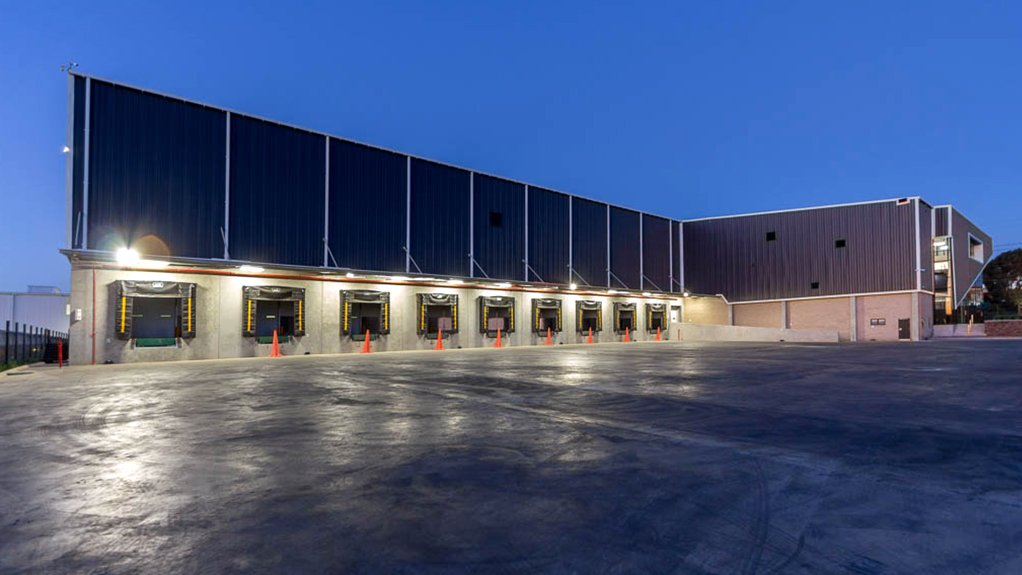Industrial property faces expansion hurdles


DEMAND VS SUPPLY Increased demand for property spaces post-covid has led to diminishing zoned land availabilty
The local property sector was subjected to a forced slowdown, owing to the Covid-19 pandemic, consequently resulting in tension within the industrial property space as industrial tenants that needed to execute growth plans were waiting to evaluate what the real effects of Covid would be on their supply chain as well as their product demand, says commercial and industrial property brokers Swindon Property Cape Town director Marcus te Vaarwerk.
However, since the start of this year, several companies have committed to buying or renting property spaces or have been looking to develop buildings to their requirements.
This resulted in the industrial sector moving from urgently looking to fill spaces at reduced rates to a scarcity of stock, with rental levels generally returning to pre-Covid levels.
The steady lifting of restrictions has enabled companies – particularly occupying medium-sized to large industrial spaces of more than 2 500 m2 – who generally have a more stable and secure client base or supply an essential product or service, to focus on growth, explains Te Vaarwerk.
However, the lack of existing industrial stock has resulted in the market’s need to react by building additional facilities amid the quickly diminishing availability of zoned land available, specifically land for sale.
Te Vaarwerk says this is largely owing to the large tracts of land or industrial parks generally being owned by property funds, which depend on the land for their own development purposes and income generation, and which therefore are less willing to sell, especially as there is little with which to replace the tracts of land or industrial parks.
Consequently, it makes it difficult for larger tenants to become owners, unless they are prepared to pay a premium for the land available.
“We have seen this dynamic unfold with acquisitions in the Western Cape, specifically with data centres, which are prepared to pay previously unseen values to secure their specific site and power requirements,” explains Te Vaarwerk.
The resultant lack of willing sellers is likely to result in more developments being long-term leaseholds, built to a tenant’s specifications
Several factors determine the higher rentals that these new buildings command, such as the rapidly increasing interest rate and holding costs that developers have carried throughout the “past few quiet years”, as well as the rapid inflation rate in the cost of construction materials, specifically steel.
While such factors contribute to the increase in rental values, they are partially offset by the high demand for these sites.
This is creating a large disparity between existing industrial building rentals, built five years ago, and those that are being developed now.
“This poses an interesting question of how one bridges the gap between these levels moving forward. Is it in the clever working of brownfield sites or is it simply to source cheaper land further away from the main city nodes, like agricultural land with rezoning potential,” posits Te Vaarwerk.
Developers are searching for opportunities further away from the city hubs, owing to rapid city expansion and land shortages.
This makes the pricing more affordable as either land meant for agricultural use has to still go through a rezoning process or there is little demand for or access to these areas.
These factors will force tenants to start expanding their searches to these outlying areas where they can find value, but such factors will have to be weighed up against the current cost of fuel and the distances clients and materials need to cover.
There are many moving parts to be considered, which present an interesting opportunity to fill this gap, Te Vaarwerk concludes.
Comments
Press Office
Announcements
What's On
Subscribe to improve your user experience...
Option 1 (equivalent of R125 a month):
Receive a weekly copy of Creamer Media's Engineering News & Mining Weekly magazine
(print copy for those in South Africa and e-magazine for those outside of South Africa)
Receive daily email newsletters
Access to full search results
Access archive of magazine back copies
Access to Projects in Progress
Access to ONE Research Report of your choice in PDF format
Option 2 (equivalent of R375 a month):
All benefits from Option 1
PLUS
Access to Creamer Media's Research Channel Africa for ALL Research Reports, in PDF format, on various industrial and mining sectors
including Electricity; Water; Energy Transition; Hydrogen; Roads, Rail and Ports; Coal; Gold; Platinum; Battery Metals; etc.
Already a subscriber?
Forgotten your password?
Receive weekly copy of Creamer Media's Engineering News & Mining Weekly magazine (print copy for those in South Africa and e-magazine for those outside of South Africa)
➕
Recieve daily email newsletters
➕
Access to full search results
➕
Access archive of magazine back copies
➕
Access to Projects in Progress
➕
Access to ONE Research Report of your choice in PDF format
RESEARCH CHANNEL AFRICA
R4500 (equivalent of R375 a month)
SUBSCRIBEAll benefits from Option 1
➕
Access to Creamer Media's Research Channel Africa for ALL Research Reports on various industrial and mining sectors, in PDF format, including on:
Electricity
➕
Water
➕
Energy Transition
➕
Hydrogen
➕
Roads, Rail and Ports
➕
Coal
➕
Gold
➕
Platinum
➕
Battery Metals
➕
etc.
Receive all benefits from Option 1 or Option 2 delivered to numerous people at your company
➕
Multiple User names and Passwords for simultaneous log-ins
➕
Intranet integration access to all in your organisation


















